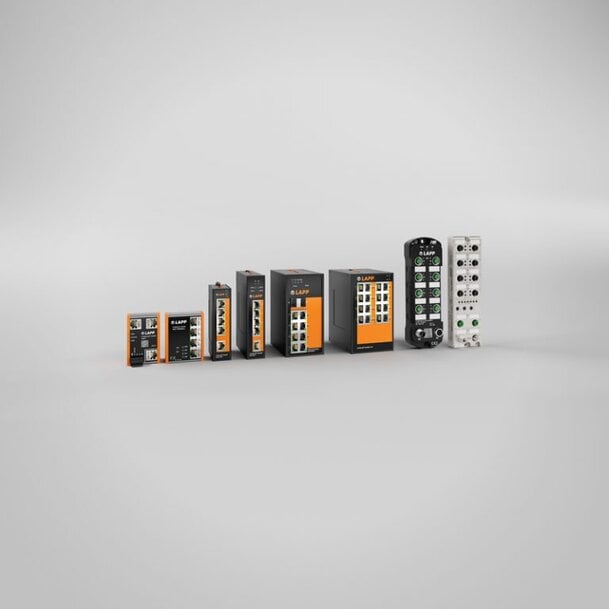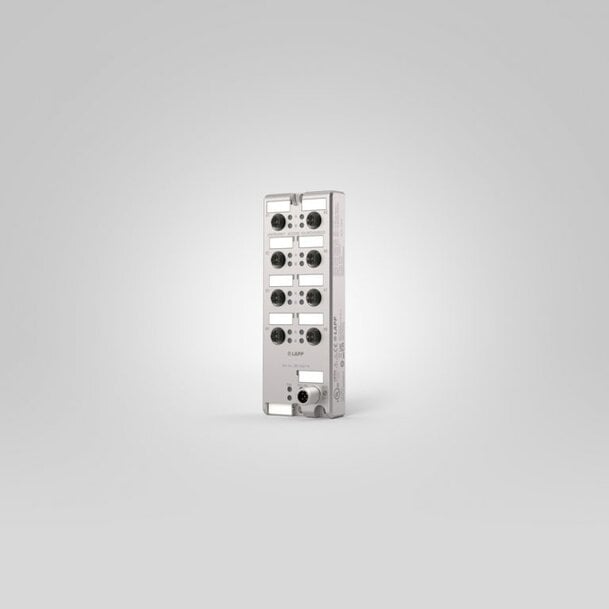LAPP introduces its first UNITRONIC® ACCESS remote I/O devices
Providing multi-protocol connectivity and simplifying decentralised sensor-actuator integration at the field level.
www.lapp.com

Remote I/O Solutions Enhance Flexible and Decentralised Automation. With the UNITRONIC® ACCESS product range, LAPP is launching its own remote I/O devices for the first time. They expand the existing Industrial Communication offering of the global market leader for integrated solutions and brand products in the field of cable and connection technology and offer new possibilities for decentralised sensor-actuator communication. All this is achieved without time-consuming cabling or complex integration. But why is decentralisation becoming increasingly important in factory automation and what makes LAPP’s solution so special? Rob van der Sluis, Head of Product & Business Development Cluster West, explains.
IO-Link is playing an increasingly important role in industrial automation. What makes this communication standard so attractive?
“IO-Link is a communication standard that is increasingly replacing classic digital and analogue signal transmission in many areas. IO-Link transmits structured data up to 32 bytes per communication cycle. This enables diagnostic functions, recording process values and remote control by using inexpensive unshielded standard cables. IO-Link is therefore the ideal solution for the field level, the lowest level of the automation pyramid.”

LAPP is a specialist in connection technology but is now offering for the first time active components. Why this step?
“With the new UNITRONIC® ACCESS remote I/O components, i.e. the IO-Link masters and hubs, we are now bringing active components to the field level. This means we now can offer from a single source to our customers the complete infrastructure for industrial- e networks: active and passive components including end-to-end connectivity from the sensor to the controller or even to the cloud.”
What distinguishes LAPP’s remote I/O devices from others on the market?
“The key difference lies in their versatility: our UNITRONIC® ACCESS devices are available as multi-protocol and single-protocol versions. The multi-protocol devices support five common Industrial Ethernet protocols (PROFINET, Ethernet/IP, EtherCAT, Modbus TCP, CC-Link IE) as well as four IoT protocols such as OPC UA, MQTT, REST API and CoAP. In addition, robust metal housings and a wide temperature range from -40 to +70°C ensure reliability under harsh conditions.”

What advantages do remote I/O devices offer for machine and plant engineering?
“Decentralisation, flexibility and cost savings. In many applications, such as intralogistics, it is inefficient to wire each sensor individually in the control cabinet. Thanks to protection classes IP67 and IP69K, our UNITRONIC® ACCESS modules can be installed directly in the plant. This saves space, significantly reduces wiring effort and thus lowers the susceptibility to errors. Another advantage is the simple plug-and-play commissioning and automatic parameterisation when replacing a sensor. This not only reduces installation costs, but also maintenance costs.”
And what developments can we expect from LAPP in the future?
“Our remote I/O devices are not a one-off project, but part of a comprehensive strategy. We are continuously working to expand our portfolio, for example with complementary diagnostic and visualization solutions. This can be experienced live in our LAPP Exploration Centre in Stuttgart.”
www.lapp.com
Follow LAPP
LinkedIn: https://www.linkedin.com/company/lapp-group-uk/
Facebook: https://www.facebook.com/LappGroupUK
Instagram: https://www.instagram.com/lapp_uk/
YouTube: https://www.youtube.com/c/LAPPDEU/videos

